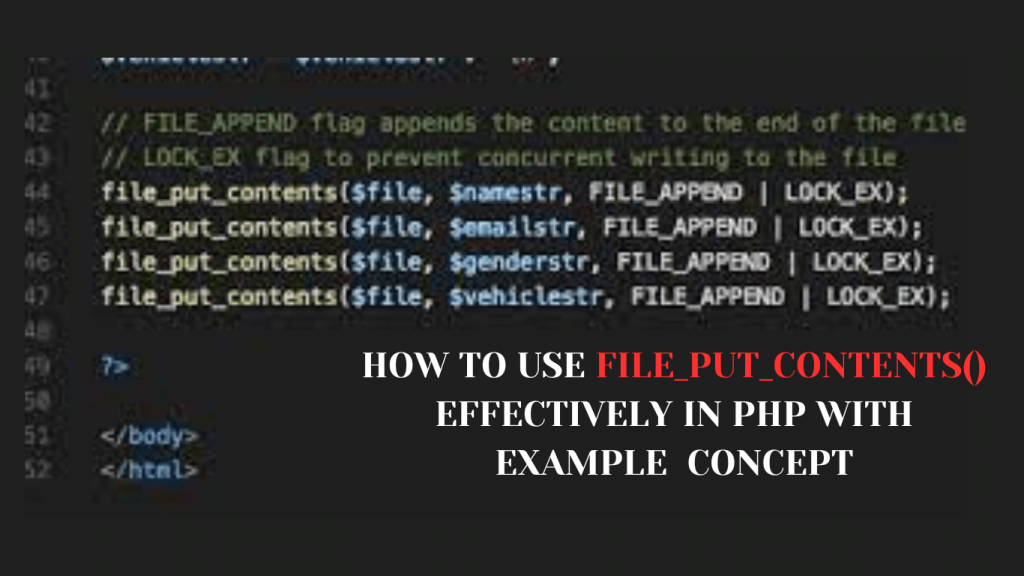- Get link
- X
- Other Apps
Writing data to a file is a common task in web development, and PHP provides a simple and powerful function for this purpose: file_put_contents(). This function can write a string to a file with just a single line of code, making it a convenient tool for working with files in PHP.
Before we dive into examples, let’s take a closer look at the syntax of file_put_contents(). The function takes two mandatory arguments: the filename and the data to be written. It can also take an optional third argument that specifies flags that control how the file is written.
- $filename is the name of the file to write to. This can be a relative or absolute path.
- $data is the data to be written to the file. This can be a string or an array of strings.
- $flags is an optional parameter that specifies flags that control how the file is written. This can be one or more of the following constants: FILE_USE_INCLUDE_PATH, FILE_APPEND, LOCK_EX.
- $context is an optional parameter that specifies a stream context. This is typically used to set options that affect the behavior of the stream, such as timeouts or authentication credentials.
The function returns the number of bytes written to the file on success or false on failure.
- Get link
- X
- Other Apps

Comments
Post a Comment